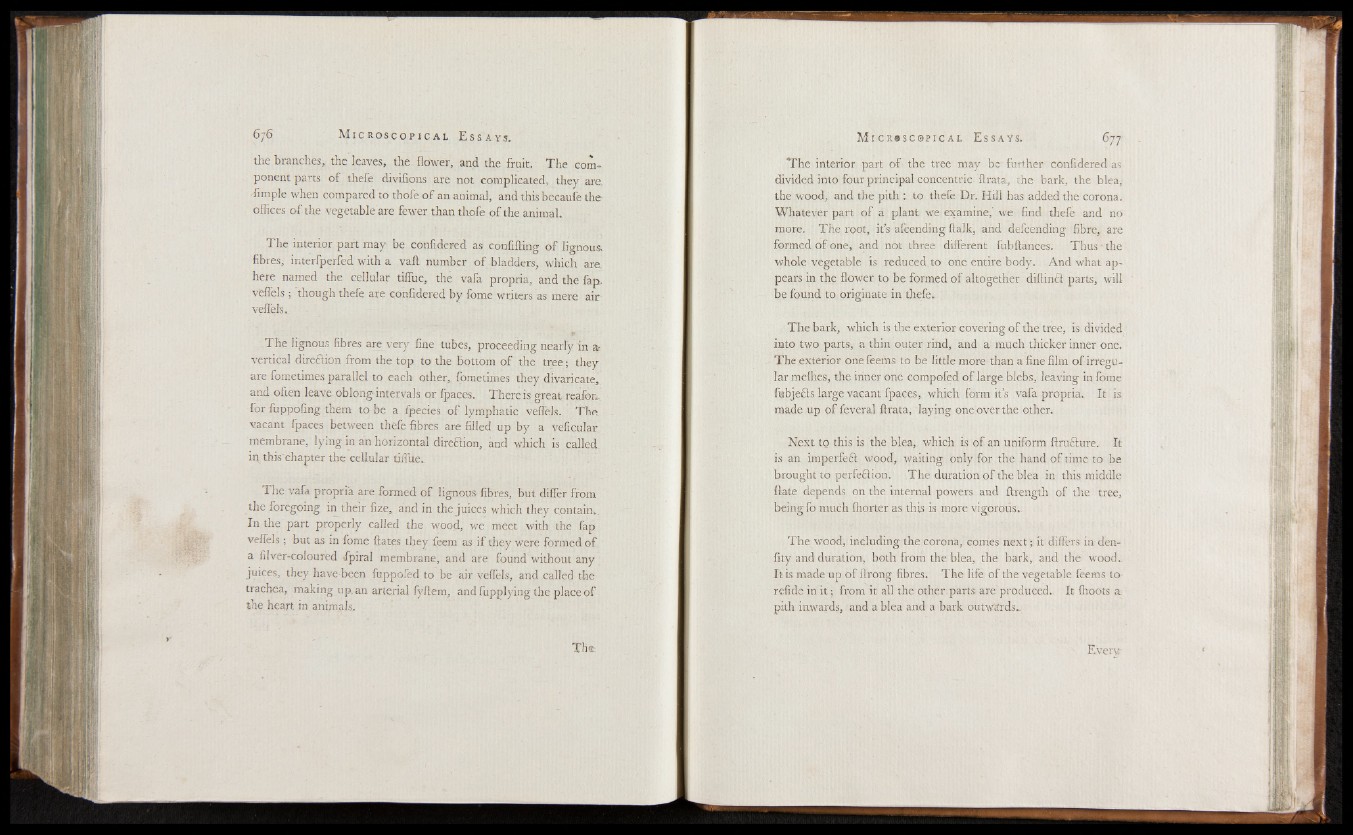
M 676 i c r o s c o p i c a l E s s a y s .
the branches, the leaves, the flower, and the fruit. The component
parts o f thefe divifions are not complicated, they are.
Ample when compared to thofe o f an animal, and this becaufe the
offices o f the vegetable are fewer than thofe of the animal.
The interior part may be confidered as confiding o f lignous,
fibres, interfperfed with a vaft number o f bladders, which are,
here named the cellular tiffue, the vafa propria, and the fap.
veflels ; though thefe are confidered by fome writers as mere air
veffels..
The lignous fibres are very fine tubes, proceeding nearly in a-
vertical direflion from the top to the bottom o f the tree; they
are fometimes parallel to each other, fometimes they divaricate,
and often leave oblong intervals or fpaces. There is great reafon
for fuppofing them to be a fpecies o f lymphatic veffels. The
vacant fpaces between thefe fibres are filled up by a veficular
membrane, lying in an horizontal direction, and which is called,
in this'chapter the cellular tiflue.
The vafa propria are formed of lignous fibres, but differ from
the foregoing in their fize, and in the juices which they contain..
In the part properly called the wood, we meet with the fap
veffels ; but as in fome Gates they feem as if they were formed o f
a fdver-coloured fpiral membrane, and are found without any
juices, they have been fuppofed to be air veffels, and called the
trachea, making up, an arterial fyftem, and fupplying the place o f
the heart in animals.
The:
M i c r » s c ©p i c a l E s s a y s . 677
"The interior part of the tree may be further confidered as
divided into four principal concentric ftrata, the bark, the blea,
the wood, and the pith : to thefe Dr. Hill has added the corona.
Whatever part o f a plant we examine,' we find thefe and no
more. The root, it’s- afcending ftalk, and defcending fibre, are
formed o f one, and not three different fubftances. Thus • the
whole vegetable is reduced to one entire body. And what appears
in the flower to be formed of altogether diftinft parts, will
be found to originate in thefe.
The bark, which is the exterior covering of the tree, is divided
into two parts, a thin outer rind, and a much thicker inner one.
The exterior onefeems to be little more than a fine film o f irregular
meflies, the inner one compofed of large blebs, leaving in fome
fubjeHs large vacant fpaces, which form it’s vafa propria. It is
made up o f feveral ftrata, laying one over the other.
Next to this is the blea, which is of an uniform ftruclure. It
is an imperfeft wood, waiting only for the hand of time to be
brought to perfeHion. The duration o f the blea in this middle
flate depends on the internal powers and ftrength of the tree,
being fo much Ihorter as this is more vigorous.,
The wood,: including the corona, comes next ] it differs in den-
fity and duration, both from the blea, the bark, and the wood.
It is made up o f llrong fibres. The life of the vegetable feems to
refide in i t ; from it all the other parts are produced. It ftioots a.
pith inwards, and a blea and a bark outwards.
Ev.c